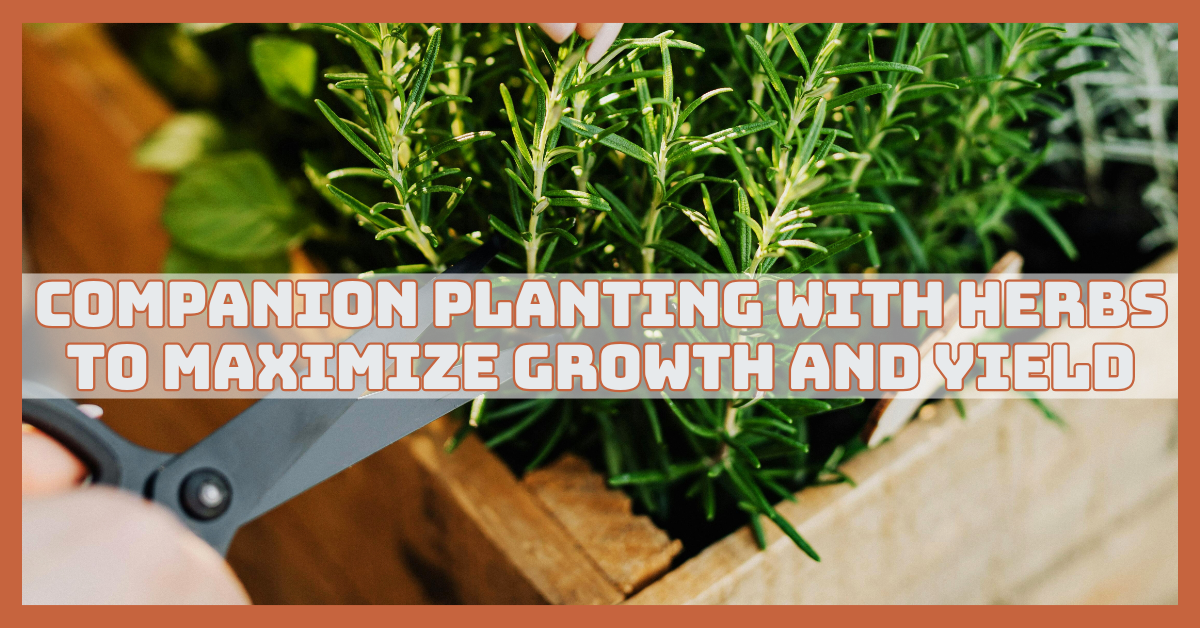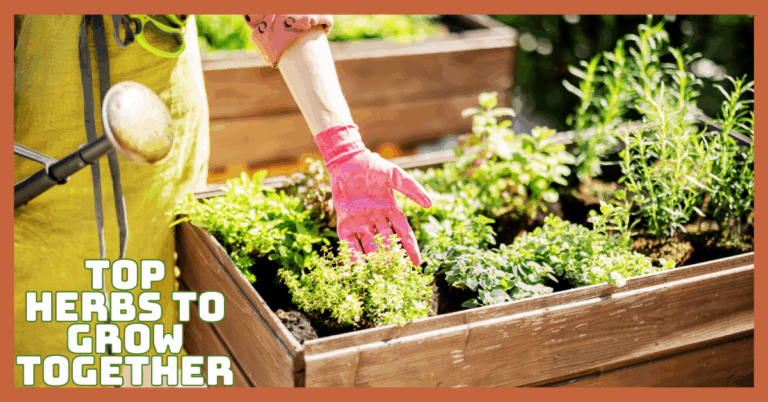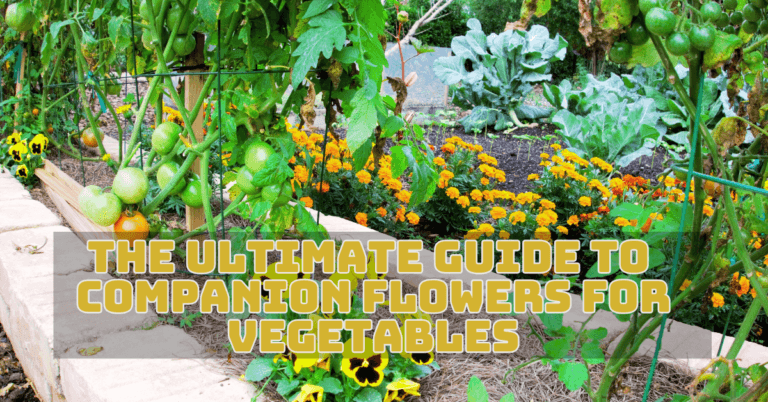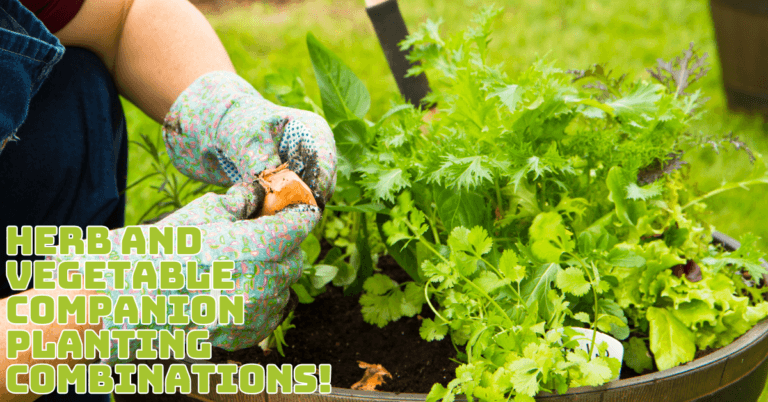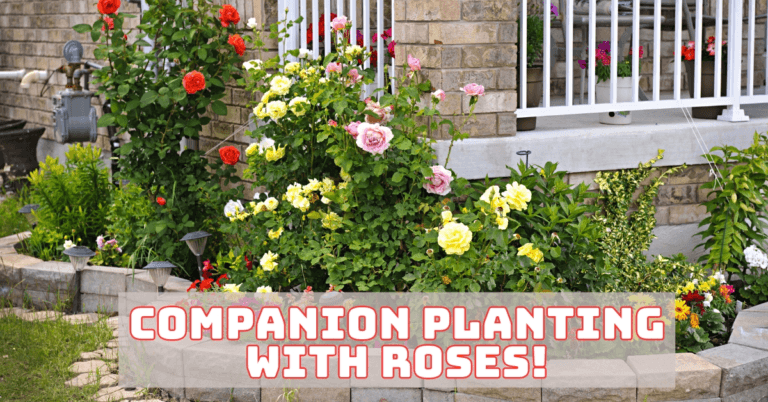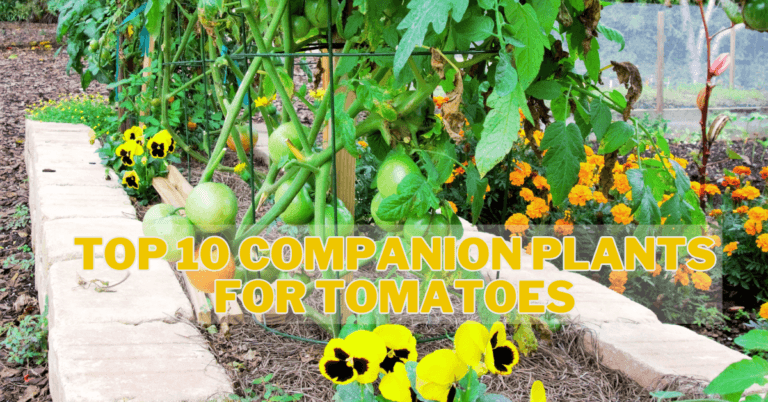Companion Planting With Herbs To Maximize Growth
Companion planting with herbs is a simple, natural way to boost your garden’s health, harvest, and flavour.
By pairing herbs with vegetables, you create a friendly plant community that protects against pests, attracts pollinators, and enriches the soil.
Whether you're growing tomatoes, leafy greens, or root veggies, the right herb companions help your plants thrive with less effort.
Let’s explore how to use herbs to maximize growth and yield while building a vibrant, balanced garden ecosystem.
Why Herbs Make Great Garden Companions
Herbs aren’t just pretty. And they aren't just tasty. They play a bigger role in the garden ecosystem. Here’s why they’re worth adding as companions:
1. Natural Pest Control
Herbs release strong scents and essential oils that confuse or repel harmful insects. Basil deters aphids, rosemary protects against beetles, and mint scares away ants and cabbage pests. With herbs as natural protectors, you reduce chemical sprays while keeping plants healthy and thriving.
2. Pollinator Magnets
Dill, cilantro, lavender, and thyme are examples of flowering herbs that attract pollinators like butterflies and bees to your garden.
These helpful visitors boost fertilization, which leads to more fruits, vegetables, and seeds. More pollination means bigger harvests, healthier plants, and a more vibrant, buzzing garden space.
3. Soil Health Boost
As they develop and disintegrate, herbs like clover and chamomile break up compacted dirt, fix nitrogen, and add organic matter to the soil.
This enhances soil structure, feeds microbes, boosts drainage, and creates a fertile foundation for stronger vegetable roots and steady growth.
4. Better Flavour
Some herbs release aromatic compounds into the surrounding air and soil, subtly enhancing the taste and fragrance of nearby vegetables.
Basil often boosts tomato sweetness and aroma, while chives help improve carrot and lettuce flavour. Companion planting becomes a natural seasoning tool.
5. Less Weeding
Low-growing herbs like thyme, mint, and oregano spread as ground covers, shading the soil and crowding out weeds. This reduces competition for water and nutrients. They also hold soil moisture longer, helping vegetables stay hydrated and reducing maintenance for busy gardeners.
6. Disease Prevention
Herbs such as sage, chives, and thyme help prevent fungal diseases by releasing antifungal compounds and improving airflow around plants.
Their presence lowers humidity close to soil level, discouraging mildew and rot. Healthier plants mean longer harvest seasons and fewer plant losses.
7. Beneficial Insect Support
Some herbs attract insects that eat common garden pests. Parsley and dill draw ladybugs and predatory wasps that feast on aphids and caterpillars.
This creates a mini-ecosystem where nature manages pests for you, leading to a balanced, chemical-free garden environment.
8. Space Efficiency
Herbs are compact and can be tucked between vegetable rows, in bed edges, or in containers nearby. Their small footprint makes efficient use of space while offering significant benefits. Perfect for small gardens, patios, raised beds, and balcony growers looking to maximize productivity.
Best Herb And Vegetable Companion Planting Pairings
Here comes the fun part. Let's talk bright pairings. When herbs and vegetables grow together strategically, magic happens.
1. Basil + Tomatoes
Basil and tomatoes are the ultimate garden partnership. They help each other grow better, stay healthier, and taste richer. Basil’s strong scent confuses tomato pests like hornworms and aphids, keeping damage low without chemicals.
Plant basil around each tomato base, giving them a little breathing room but close enough to share benefits. Snip basil regularly to prevent early flowering and to encourage fuller leaves.
As basil grows, tomatoes respond with improved flavour and stronger yields. It’s simple, powerful, and perfect for beginners. Gardeners swear by this duo — try it, and you’ll notice the difference in taste and growth.
Pro Tips
- Pinch basil tops weekly
- Space basil 8–12 inches
- Remove tomato suckers early
- Water at the soil level
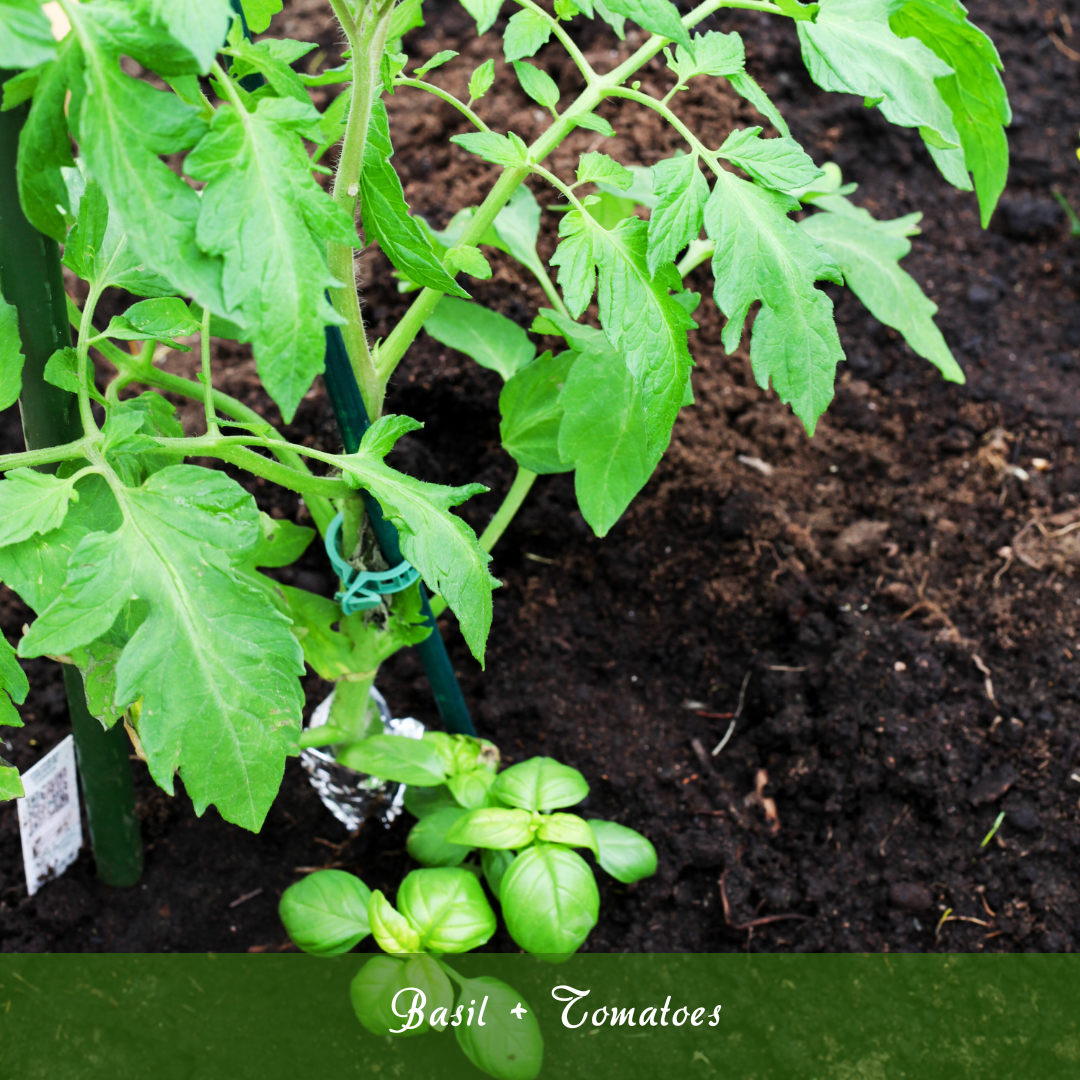
2. Dill + Cabbage Family
Dill is a powerhouse partner for cabbage family crops. It naturally attracts helpful insects like ladybugs, hoverflies, and tiny parasitic wasps that hunt caterpillars and cabbage worms.
These little guardians protect broccoli, cabbage, cauliflower, and kale without chemicals. The trick is letting some dill grow tall and flower, because that’s when it becomes a magnet for beneficial insects.
Plant dill near your brassicas, not crowded, and let nature work for you. Your leafy crops stay cleaner, healthier, and stronger. This pairing makes pest control easy, gentle, and effective. Add dill, sit back, and watch your garden thrive beautifully.
Pro Tips
- Let dill plants bloom naturally.
- Thin seedlings for airflow
- Don’t plant dill too densely.
- Avoid dill near mature tomatoes.
3. Parsley + Tomatoes / Peppers / Asparagus
Parsley is a quiet but powerful helper in the garden. It attracts predatory insects like ladybugs and hoverflies that feast on pests harming tomatoes, peppers, and other crops. Planting parsley near these vegetables improves their growth naturally and helps reduce pest problems.
Asparagus also thrives beside parsley, benefiting from its soil-friendly properties. Let parsley grow a bit tall and allow occasional flowers — these attract pollinators, supporting all nearby plants.
With regular harvesting and proper spacing, parsley becomes a companion that nurtures, protects, and strengthens your garden. This simple pairing makes vegetable gardening easier, healthier, and more productive.
Pro Tips
- Allow parsley to flower occasionally.
- Space parsley 8–10 inches apart
- Harvest leaves regularly for bushiness.
- Keep soil moist but well-drained
4. Chives + Carrots / Lettuce / Tomatoes
Chives are small but mighty garden allies. Their strong scent repels carrot flies and aphids, keeping carrots and other crops safe.
Chives are a great example of companion planting with herbs, helping repel pests, attract pollinators, and support nearby vegetables naturally.
Chive flowers attract bees, boosting pollination for nearby vegetables—plant chives in clusters or along borders for maximum effect. Regularly trimming leaves encourages fresh, bushy growth.
With their pest-repelling power, pollinator attraction, and disease-prevention benefits, chives make a valuable companion in any vegetable garden. They’re easy to grow, low maintenance, and enhance both the health and yield of your crops.
Pro Tips
- Plant chives in small clusters
- Trim leaves regularly for bushiness.
- Place near susceptible vegetables
- Let flowers bloom for pollinators
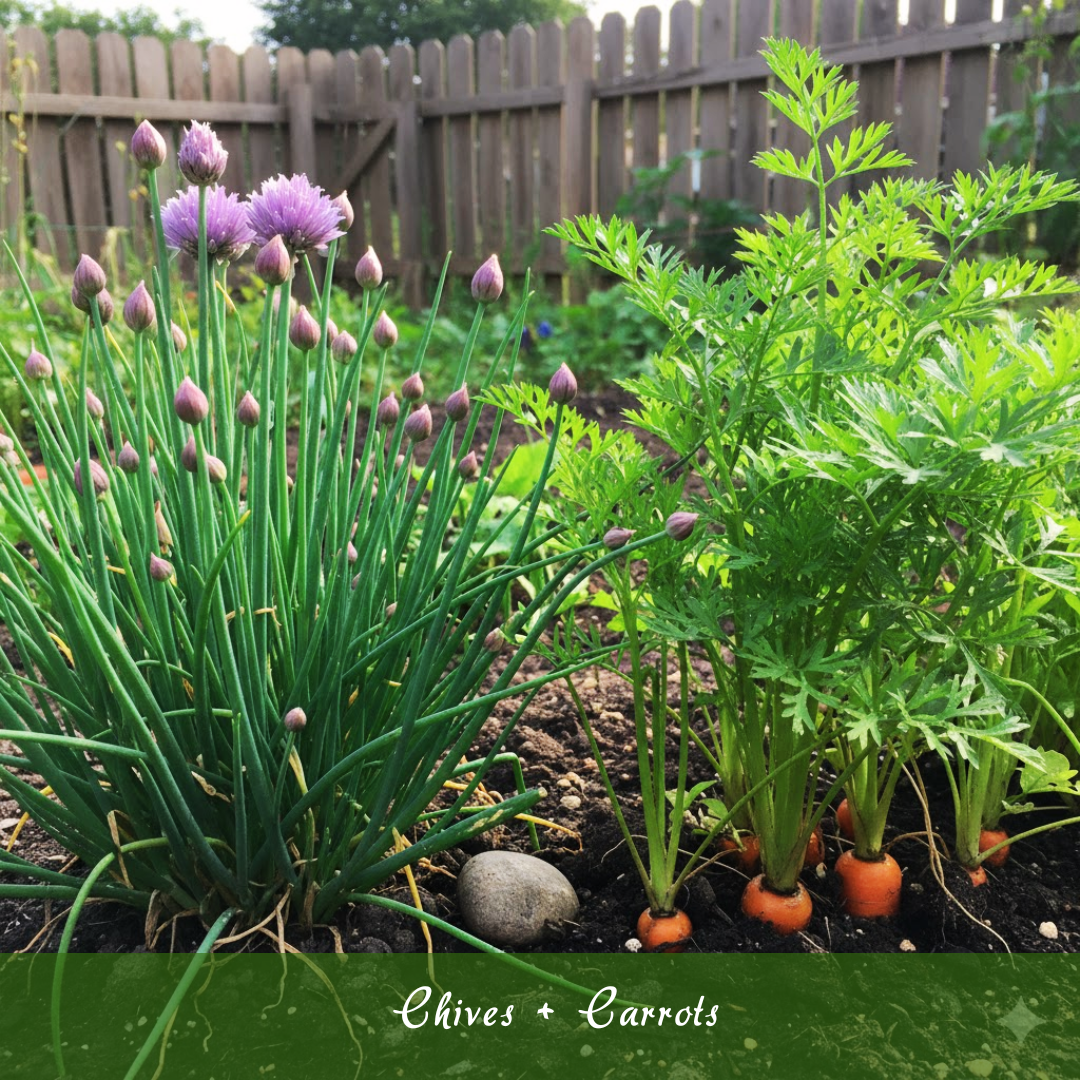
5. Cilantro + Spinach / Lettuce / Brassicas
Cilantro is more than a flavourful herb—it’s a garden helper. Its leaves provide shade that cools the soil, keeping spinach, lettuce, and other leafy greens happy during warm days.
Cilantro flowers attract pollinators and beneficial insects like ladybugs and parasitic wasps, which naturally control aphids and other pests.
Plant cilantro near your greens and brassicas for these protective and supportive effects. Let some plants flower to maximize insect attraction.
Regular harvesting encourages fresh growth and prevents bolting. With cilantro as a companion, your leafy vegetables stay healthier, pests are reduced, and yields improve naturally.
Pro Tips
- Allow some cilantro to flower
- Space plants 6–8 inches apart
- Harvest leaves before bolting starts
- Keep soil moist but well-drained
Turn Your Passion for Nature Into Income
🌿 Whether you love gardening, caring for animals, or exploring holistic living,
You can share your knowledge online and earn from it.
Discover how nature lovers are growing their passions into meaningful, income-generating blogs. 👇
6. Sage + Brassicas
Sage is an excellent example of companion planting with herbs, naturally protecting brassicas from pests and supporting healthier, more productive vegetable growth.
Its intense aroma confuses pests, especially cabbage worms, reducing damage naturally. Plant sage near brassicas to create a protective barrier that enhances vegetable growth.
Regular pruning keeps sage healthy and encourages bushier growth, maximizing its pest-repelling effects. Sage also attracts beneficial insects when it flowers, which helps maintain garden balance.
It prefers well-drained soil and sunny spots. With sage as a companion, brassicas stay stronger, healthier, and more productive without chemical interventions. This pairing is simple, effective, and great for beginner and experienced gardeners alike.
Pro Tips
- Plant sage near brassica edges
- Prune regularly for bushy growth.
- Space plants 12–18 inches apart.
- Allow flowers to attract insects.
7. Thyme + Cabbage / Broccoli / Strawberries
Thyme is a low-growing herb that protects your garden naturally. Its aroma repels cabbage worms, slugs, and other pests, keeping crops like cabbage and broccoli healthier.
Plant thyme along strawberry borders—it improves soil conditions, helps retain moisture, and reduces weeds. Its dense, spreading growth works as living mulch, shading the soil and limiting competition.
Thyme also attracts pollinators when it flowers, benefiting nearby plants. Easy to grow and drought-tolerant, thyme thrives in sunny spots with well-drained soil.
With minimal care, it enhances garden health, boosts yields, and adds a fragrant touch. Companion planting with thyme is both practical and effective.
Pro Tips
- Plant thyme along crop edges
- Trim regularly to encourage growth.
- Space 6–12 inches apart
- Allow flowers for pollinator attraction
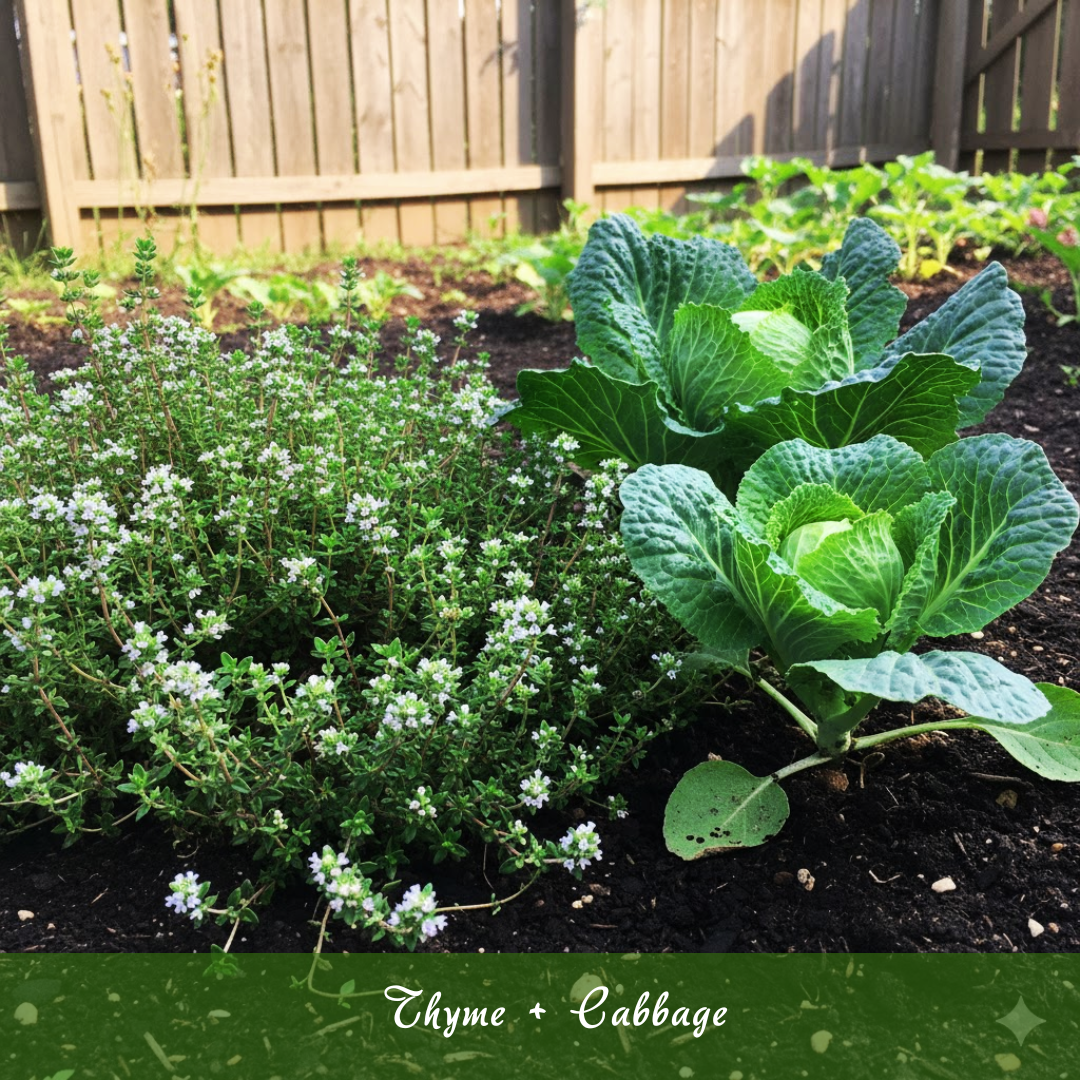
8. Rosemary + Beans / Carrots / Cabbage
Rosemary is a hardy, aromatic herb that protects many vegetables. Its strong scent repels bean beetles, cabbage moths, and other common pests.
Plant rosemary near beans, carrots, or cabbage to reduce damage naturally. Its woody stems also act as natural supports and bed borders, helping organize your garden.
Rosemary prefers sunny, well-drained spots and grows slowly but steadily. Regular pruning encourages bushier growth and more aroma, which enhances pest protection.
Companion planting with rosemary boosts vegetable health, deters insects, and improves garden structure. This easy-to-grow herb adds flavour, fragrance, and practical benefits, making it a versatile addition to any vegetable bed.
Pro Tips
- Plant rosemary in sunny locations
- Space plants 18–24 inches apart
- Prune regularly for denser growth.
- Use stems as natural bed supports.
9. Oregano + Most Vegetables
Oregano is a versatile, low-growing herb that benefits almost any vegetable garden. Its dense growth acts like a natural mulch, shading soil, reducing weeds, and retaining moisture. Thiophene aroma deters pests such as aphids, cabbage worms, and beetles.
Tiny oregano flowers attract pollinators and beneficial insects, helping boost yields. It particularly well with tomatoes, peppers, and squash—plant oregano along edges or between crops for maximum protection.
Regular trimming encourages bushier growth and prevents it from spreading too aggressively. With oregano as a companion, your garden stays healthier, more productive, and easier to maintain, all naturally.
Pro Tips
- Trim oregano regularly to prevent spreading.
- Plant at bed edges for protection
- Space plants 8–12 inches apart
- Allow flowers to attract pollinators.
10. Mint + Cabbage / Carrots / Beets
Using companion planting with herbs, mint can protect cabbage, carrots, and beets naturally while keeping your garden organized and pest-free.
However, mint spreads aggressively and can take over a garden if left unchecked. The best approach is to grow mint in a pot. Place the pot near your vegetable beds so the scent reaches the crops, giving protection without chaos.
This method keeps your garden organized while letting mint do its job. Regular harvesting also keeps it controlled. With this setup, your vegetables stay healthier, pest-free, and flavorful all season long.
Pro Tips
- Grow mint in a separate pot.
- Trim mint leaves regularly for control.
- Place the pot close to the vegetable beds
- Rotate the mint position for a more pungent scent.

11. Marjoram + Tomatoes / Peppers / Eggplant
Marjoram is a gentle but powerful companion for summer vegetables. Its aroma repels common pests like aphids and whiteflies, helping tomatoes, peppers, and eggplant stay healthier.
Marjoram also subtly enhances the flavour of nearby vegetables, making harvests tastier. Plant it in sunny, well-drained areas where it can grow freely without overcrowding.
Regular harvesting encourages bushier growth and more aromatic leaves. This herb also attracts beneficial insects, adding natural pest control.
Marjoram works best when interplanted among vegetables or along bed edges. With minimal care, it strengthens plants, protects crops, and adds delightful fragrance to your garden space.
Pro Tips
- Space plants 12 inches apart.
- Snip leaves regularly for business.
- Plant in full sun locations
- Harvest before flowering for flavour.
12. Lavender + Brassicas / Fruit Plants
Lavender is a perfect example of companion planting with herbs, helping repel pests, attract pollinators, and support healthier, more productive crops.
Its strong scent repels pests such as moths and whiteflies, protecting crops like cabbage, broccoli, and strawberries. Lavender flowers attract bees and other beneficial insects, improving pollination and increasing yields—plant lavender along garden edges or near vulnerable vegetables and fruits for maximum effect.
To flourish, it needs full sun and soil that drains properly. Regular pruning keeps it healthy, encourages flowering, and maintains shape.
Beyond practical benefits, lavender adds a beautiful aroma and visual appeal. Companion planting with lavender creates a healthier, more productive, and pleasing garden environment.
Pro Tips
- Plant lavender in full sun
- Space plants 18–24 inches apart
- Prune after the flowering season
- Place near brassicas or berries
13. Lovage + Celery / Tomatoes / Cabbage
Lovage is a tall, aromatic herb that supports many garden vegetables. Its strong scent attracts beneficial insects like ladybugs and parasitic wasps, which help control pests naturally.
Lovage enhances the growth of nearby crops such as celery, tomatoes, and cabbage by improving soil conditions and microclimate.
It is a good border plant that gives vegetable beds shelter and structure. Give your roots enough room to spread out and plant in full sunlight with well-drained soil.
Regular harvesting encourages healthy growth. With lovage, your garden gains natural pest control, stronger vegetables, and a visually appealing herb companion.
Pro Tips
- Plant lovage along garden edges
- Space plants 18–24 inches apart
- Harvest leaves regularly for growth.
- Allow flowers to attract insects.
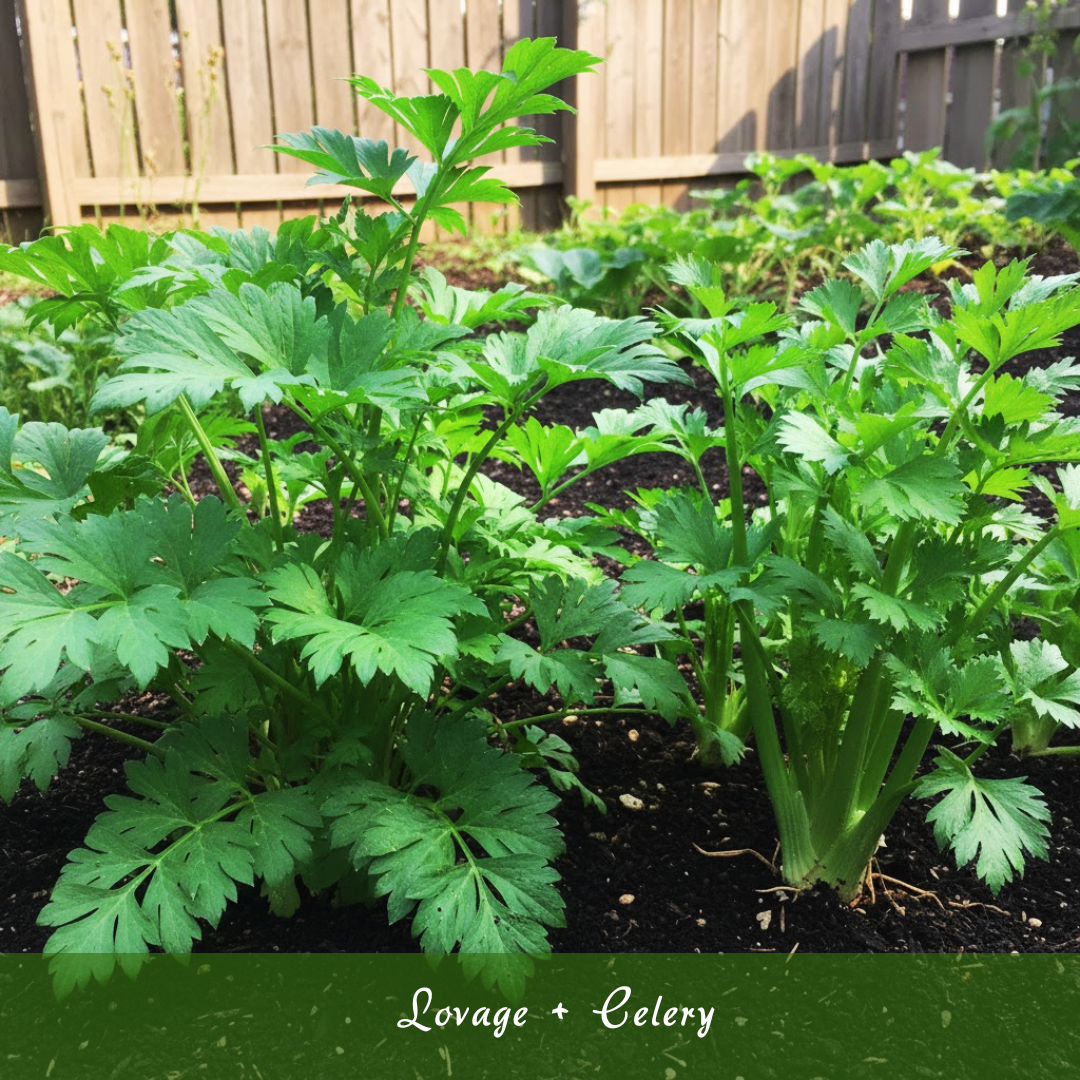
14. Borage + Tomatoes / Strawberries / Squash
Borage is a versatile, edible herb that benefits many garden crops. Its deep roots improve soil structure and add nutrients, boosting the growth of tomatoes, strawberries, and squash.
The bright blue flowers attract bees and other pollinators, increasing fruit set and overall yield. Borage also helps deter tomato hornworms and other pests, acting as a natural protector.
Plant it near crops, but give it space, as it can grow large. Regularly harvesting leaves encourages new growth. Beyond practicality, borage adds colour, fragrance, and edible leaves for salads or teas. It’s a beautiful, functional companion for any vegetable garden.
Pro Tips
- Plant borage near sun-loving crops
- Space plants 12–18 inches apart.
- Allow flowers to attract pollinators.
- Harvest leaves to encourage new growth
15. Fennel + Dill / Cabbage Family (Separate)
Fennel is a unique herb that attracts pollinators and beneficial insects to your garden. Its tall, feathery foliage draws bees, ladybugs, and parasitic wasps, supporting nearby crops indirectly.
However, fennel releases chemicals that inhibit the growth of most vegetables, including tomatoes, peppers, and beans.
To avoid problems, plant fennel in a separate area away from sensitive vegetables, or in a container. Its seeds are edible and flavour many dishes, adding culinary value.
Despite its allelopathic nature, fennel remains a valuable companion for flowers and pollinator-friendly zones. It’s a gardener’s secret for boosting beneficial insects safely.
Pro Tips
- Plant fennel away from vegetables
- Use containers to control the spread
- Harvest seeds for cooking regularly
- Allow flowers to attract pollinators.
FAQs
1. What Is Companion Planting With Herbs?
Companion planting means growing herbs beside vegetables to naturally repel pests, attract pollinators, and enhance plant health without chemical fertilizers.
2. Which Herbs Repel Pests?
Basil, mint, rosemary, sage, thyme, and chives effectively repel aphids, mosquitoes, and beetles while protecting your garden’s vegetables from harmful insects naturally.
3. Can Herbs Improve Flavour?
Yes, herbs like basil enhance tomato flavour, while chives complement carrots, creating tastier harvests through beneficial root interactions and improved soil chemistry.
4. How Far To Plant Herbs From Veggies?
Plant herbs about 6–12 inches from vegetables to allow airflow, avoid nutrient competition, and still provide pest-repelling benefits effectively.
5. Can I Grow Mint Safely?
Yes, but grow mint in pots to prevent it from spreading aggressively and overtaking nearby plants in your garden beds.
6. Will This Reduce Chemicals?
Yes, companion herbs naturally deter pests and diseases, reducing your dependence on synthetic pesticides while supporting a balanced, eco-friendly garden ecosystem.
7. Can It Work In Containers?
Absolutely, most herbs grow beautifully in containers with vegetables, offering pest protection, fragrance, and compact gardening convenience for small spaces.
8. Any Herbs To Avoid Near Vegetables?
Avoid planting fennel near vegetables, as it releases chemicals that inhibit growth and disrupt the healthy development of nearby plants.
Conclusion
Companion planting with herbs is a natural, effective way to boost garden health, yield, and flavour. Herbs repel pests, attract pollinators, improve soil, and support nearby vegetables.
By choosing the right pairings—like basil with tomatoes or dill with cabbage—you create a thriving, balanced garden ecosystem. Even small herb additions can make a big difference.
With careful planning, proper spacing, and regular care, your vegetables will grow stronger, healthier, and more productive, while your garden becomes more vibrant, fragrant, and enjoyable.
I trust you enjoyed this article on Companion Planting With Herbs To Maximize Growth And Yield. Please stay tuned for more inspiring guides, helpful tips, and ideas to help you live closer to nature every day.
Take care!
— JeannetteZ
💬 Your Opinion Is Important To Me
Do you have thoughts, ideas, or questions? I’d love to hear from you. Please leave your comments below or email me directly at Jeannette@Close-To-Nature.org.
📚 More Nature-Inspired Reads
Explore more ways to connect with nature, nurture your pets, and live in harmony with the world around you 🌿

